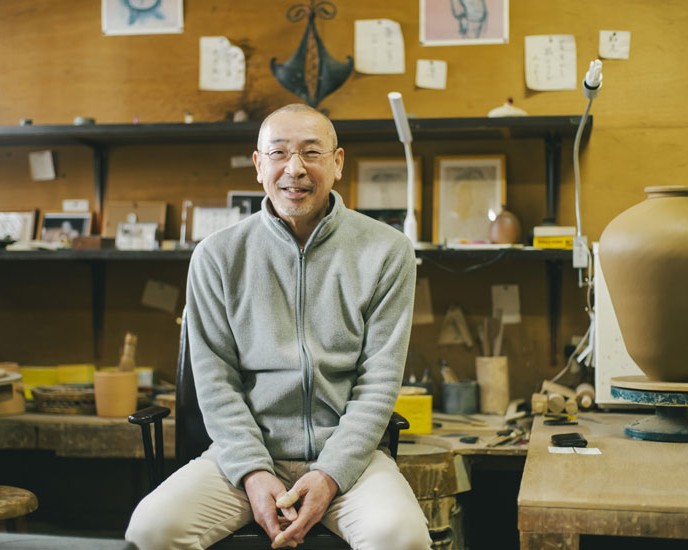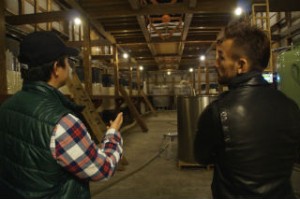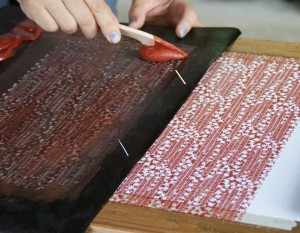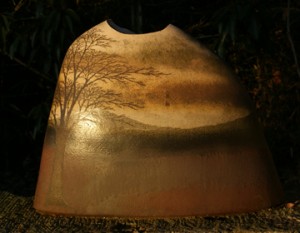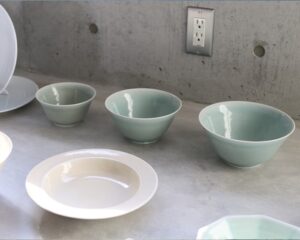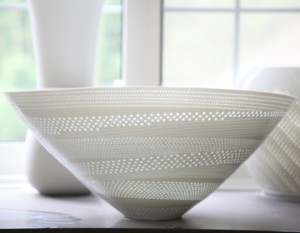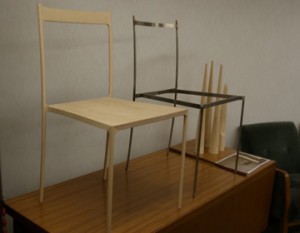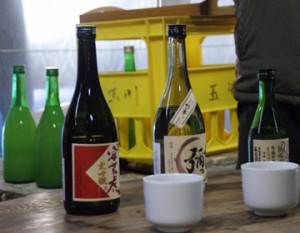Suzu ware is characterized by its strong, expressive black color and simple, beautiful form. This pottery, produced in Suzu City, Ishikawa Prefecture, ceased to exist about 500 years ago and was called “phantom old pottery. Shinohara Takashi, a Suzu-yaki artist, has devoted his life to the revival of Suzu-yaki since the Showa period (1926-1989) and continues to work with the clay to this day.
A fantastic old pottery originating from the Heian period

Suzu ware was representative of medieval pottery, but disappeared suddenly in the Muromachi period (1336-1573). Suzu City, Ishikawa Prefecture, located at the tip of the Noto Peninsula, was once a major pottery production center.
There are several conditions for the establishment of a pottery production center. There are several conditions for a pottery production area to be established: soil suitable for pottery, transportation, an abundant supply of red pine firewood for fuel, and a sponsor to support the production. Pearl Island met all of these conditions.
Although today’s Suzu City is located at the end of a peninsula, it was once a hub of distribution and trade via sea routes. In the mid-12th century, when Suzu ware was first produced, aristocrats were expanding their manors throughout the region. The manors of the Kujo family, a prestigious aristocrat from Kyoto, were located in the vicinity of Suzu City, and it is thought that Suzu ware was produced as a means of managing the manors. With the backing of the manor lords, Suzu ware expanded its business area to the Sea of Japan.
The production of Suzu ware ceased at the end of the 15th century, just in time for the decline of the manor. The prevailing theory is that the loss of sponsorship was the cause of the disappearance of this phantom old pottery.
In the mid-Showa period, the whole community came together to revive Suzu ware.

In Suzu City, black pottery shards have been found scattered here and there in the city for a long time. Because of their hardened, unglazed surface, they were thought to be Sue ware introduced from the continent during the Kofun period (burial mounds). However, a survey conducted in the mid-Showa period (mid-1989s) revealed the remains of a kiln, indicating that the area was a major production center of pottery in the Middle Ages.
The “Six Old Kilns of Japan” of Echizen, Seto, Tokoname, Shigaraki, Tanba, and Bizen are known as pottery production centers that have continued since the Middle Ages, and Suzu ware has a history on par with these kilns. The people of the region were motivated to revive Suzu ware, and in 1979, for the first time in approximately 500 years, Suzu ware was revived.
Enchanted by the graceful beauty of Suzu ware

Mr. Shinohara first encountered Suzu ware 10 years after the revival of Suzu ware. It was around the time he quit his job and returned to his hometown to take over his family’s temple. At the time, a nuclear power plant project was being proposed in Suzu City, and the town was sharply divided between proponents and opponents. Mr. Shinohara joined the opposition movement to protect his beautiful hometown, but he was still hazy on the issue. While the proponents and opponents were busy arguing, I was probably overreacting, wearing a cloak over my heart and arming myself with theories,” he said. It was at this time that he stopped by the just-opened Suzu Pottery Museum.
When I stepped into the exhibition room, I was struck by the beautiful appearance of Suzu ware. The dignified black color and cleanness without decoration. Mr. Shinohara, whose mind had been so entangled in the anti-nuclear power plant movement, was struck by the unadorned beauty of Suzu ware made by ancient potters, and thought, “I want to be naked like this vessel and create something from scratch. This was the beginning of his journey into Suzu ware.
Pursuing “black” and “beauty” in pottery

One of the characteristics of Suzu ware is its unique black surface. Suzu ware is fired in a process known as “strong reduction firing,” in which the kiln is sealed after firing at a high temperature of over 1,200 degrees Celsius. The kiln is deprived of oxygen from the iron contained in the clay due to the lack of oxygen in the kiln, resulting in a black color due to the reduction reaction.
According to Shinohara, it is this “black” that makes Suzu ware what it is. To produce this color requires a large amount of fuel and is very inefficient. Other production areas have made technological innovations to improve productivity, but Suzu did not do so. They kept the black color,” Shinohara continues.
Mr. Shinohara continues. Old pottery of Suzu ware is characterized by a form that rises from a small bottom. It is not suitable for mass production because it is not stable, but they did not change this beautiful shape. Losing its sponsor, the lord of the manor, and losing the competition in the production area, Suzu ware perished while preserving its “black” and “beauty.

Mr. Shinohara, who is fascinated by the old pottery of Suzu ware, also expresses beautiful forms that bulge out from the small bottom of his works, which may seem delicate.
The newly rebuilt wood-fired kiln was damaged for the third time.
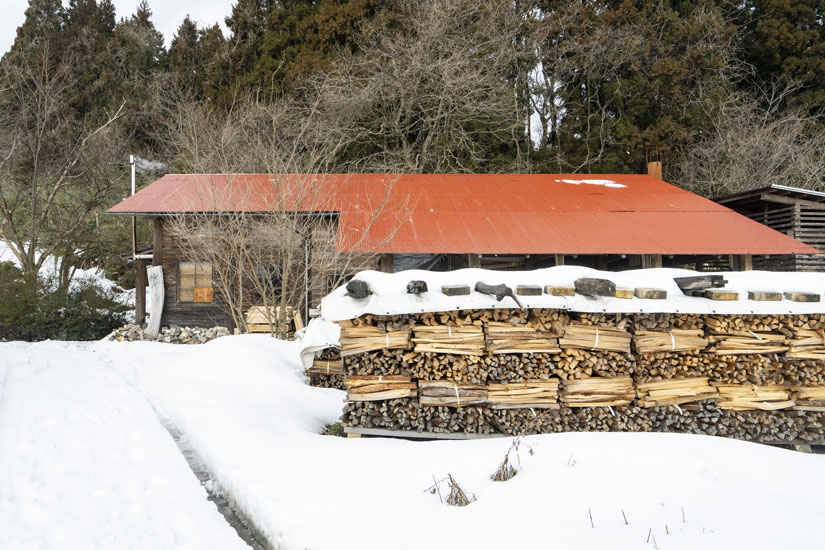
The Noto Peninsula earthquake occurred on New Year’s Day, 2024. The city of Suzu, where the studio is located, was hit by an earthquake measuring 6 upper on the Japanese scale of seven, and the wood-fired kiln, which was built by piling bricks, was completely destroyed.
After the 2023 earthquake, the kiln was rebuilt with the help of supporters from all over Japan over a period of six months, and just as they were about to light the kiln anew at the beginning of the new year, the earthquake struck.
Accepting “Atawari

No matter how many times the bricks are reassembled, no matter how many times the potter’s wheel is turned, an earthquake takes everything away. Mr. Shinohara uses the word “atawari” to describe this ordeal. Atawari” is a word from the Hokuriku region that means a given fate or chance. It is a land where people have lived in harmony with the harsh natural environment. There is no way we can go against nature. Everything is ‘atawari.

Mr. Shinohara does not use a thermometer when firing his wood-fired kiln. He burns the red pine wood while watching the expression of the flames, using his experience and intuition. Once the fire is started,” Shinohara says, ”I have no choice but to let nature take its course. Suzu-yaki, which is the product of flames beyond the reach of human knowledge, is also an “atawari” of nature.
I want my craft to be close to someone’s heart.

After the earthquake, Mr. Shinohara was approached by an elderly woman. The woman told him that she had found a small Tamasu ware vase for a single flower among the debris of her collapsed house. She told us that when she took it back to her temporary housing and arranged wild flowers by the side of the road, her despairing heart was lifted a little and she was able to look forward.
It may not have been Mr. Shinohara’s work. However, the fact that “Suzu ware saved someone’s heart” brought tears to his eyes.
Mr. Shinohara believes that “crafts may not be a necessity in daily life, but they can be a force that helps people live enriched lives.
Building a Pearl Pottery Kiln Again for the Next Generation

Thirty-nine people belong to the Soenkai, an organization of Suzu pottery makers. Some of them closed their businesses after the earthquake, and others moved out of the city, but Mr. Shinohara is upbeat, saying, “The future of Suzu pottery is not that bleak. This is because all of the young people who have moved to the city in the past few years to become Suzu ware artists have decided to remain in Suzu and continue their creative activities.
Currently, Mr. Shinohara is living in temporary housing while working to rebuild his kiln. In the workshop, the collapsed bricks have been neatly sorted and are waiting to be stacked in their original locations. The project is scheduled for completion in the summer of 2025. He hopes to fire it up in the fall.
Rebuilding the kiln is not only for himself, but also for the next generation. Mr. Shinohara hopes to rebuild the collapsed kiln and “make it a kiln where young people can grow up. Under the harsh natural climate, the flames of Suzu pottery will rise again and again.



